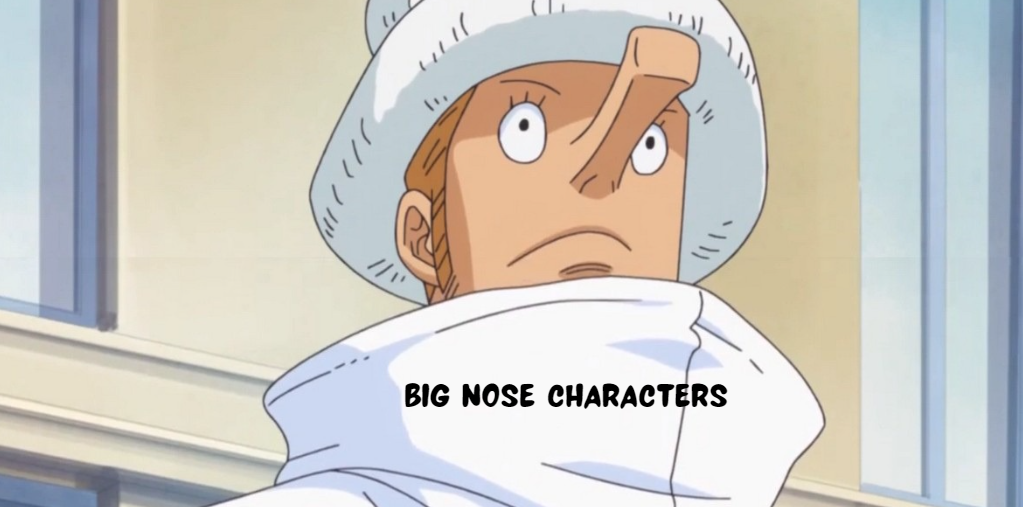Big nose characters have been a notable feature in various forms of media, from literature and folklore to modern cinema and animation. These characters often carry significant symbolic weight, serving as more than mere physical caricatures.
This article delves into the history, cultural significance, and psychological interpretations of big nose characters, offering insights that extend beyond existing literature.
Introduction
The portrayal of big nose characters across various media has captivated audiences for generations. This exploration delves into the origins, cultural implications, and evolving depictions of these characters, shedding light on their enduring appeal and significance.
Historical Context of Big Nose Characters
Big nose characters have roots in ancient mythology and folklore. In many cultures, exaggerated facial features, including large noses, were symbolic. For example, in Greek mythology, the god Silenus was often depicted with a bulbous nose, representing his association with wine and revelry. Similarly, in Roman mythology, the god Bacchus, known for his indulgence and festivities, was also depicted with a large nose.
Ancient Art and Theater
In ancient art and theater, big nose characters often symbolized wisdom or folly. The exaggerated features were used to quickly convey personality traits to the audience. For instance, in Commedia dell’arte, a form of theater that originated in Italy, the character Pantalone was known for his large nose, representing his miserly and lecherous nature.
Folklore and Fairy Tales
Folklore from various cultures also featured big nose characters. In European fairy tales, witches and ogres often had large, protruding noses, symbolizing their malevolent nature. Conversely, in some Asian cultures, large noses were considered a sign of good fortune and prosperity.
Big Nose Characters in Literature
Literature has long utilized physical characteristics to define and differentiate characters. Big nose characters often serve as metaphors or symbols within the narrative.
Classic Literature
In classic literature, characters with prominent noses were often used to highlight specific traits or themes. Cyrano de Bergerac, written by Edmond Rostand, is a prime example. Cyrano’s large nose becomes a symbol of his internal struggles, highlighting themes of beauty, love, and self-acceptance.
Modern Literature
In modern literature, big nose characters continue to serve symbolic purposes. For instance, in Roald Dahl’s “The Witches,” the Grand High Witch is described as having a large nose, enhancing her sinister and ominous presence. Similarly, in J.K. Rowling’s “Harry Potter” series, the character Severus Snape is depicted with a large, hooked nose, adding to his mysterious and intimidating aura.
Big Nose Characters in Film and Animation
Film and animation have brought big nose characters to life in vivid and dynamic ways. These characters often become iconic due to their memorable designs and personalities.
Classic Cinema
In classic cinema, big nose characters often appeared in comedies and dramas. Charlie Chaplin’s character, The Tramp, though not having an exaggeratedly large nose, had a distinctive mustache that drew attention to his facial features, making his expressions more comedic and relatable.
Animation
In animation, big nose characters are often used to create humorous and memorable designs. Disney’s Pinocchio, for example, features a wooden boy whose nose grows longer each time he lies, serving as a moral lesson about honesty. Similarly, the character Gru from the “Despicable Me” franchise has a large, pointed nose that adds to his unique and recognizable appearance.
Modern Film
Modern films continue to feature big nose characters, often using them to add depth and complexity to the narrative. In the movie “Ratatouille,” the character of Anton Ego, the food critic, has a large, sharp nose, symbolizing his discerning and critical nature.
Cultural Significance
The cultural significance of big nose characters varies across different societies. In some cultures, large noses are considered attractive and signify strength and nobility. In others, they may be used to depict certain stereotypes or negative traits.
Positive Connotations
In many cultures, a big nose is seen as a sign of wisdom, power, and maturity. For example, in ancient Chinese culture, a large nose was believed to be a sign of a prosperous and successful person.
Negative Connotations
Conversely, in some cultures, big noses are associated with negative traits such as greed or deceit. This duality highlights the complex and often contradictory nature of cultural symbolism.
Psychological Interpretations
From a psychological perspective, the depiction of big nose characters can be understood through the lens of human perception and social psychology.
Character Traits and Symbolism
The human brain often associates physical features with personality traits. This cognitive bias is known as the “halo effect,” where the perception of one trait influences the perception of other traits. Big nose characters often leverage this bias to quickly convey certain characteristics to the audience.
Stereotypes and Prejudices
While big nose characters can add depth and richness to a story, they can also perpetuate stereotypes and prejudices. It is essential to approach these depictions thoughtfully and consider the broader social implications.
Notable Examples of Big Nose Characters
Throughout history, several big nose characters have become iconic. These characters often transcend their initial appearances, leaving a lasting impact on popular culture.
Cyrano de Bergerac
Cyrano de Bergerac is perhaps the most famous big nose character in literature. His story explores themes of inner versus outer beauty, self-acceptance, and unrequited love.
Pinocchio
Pinocchio’s growing nose is a powerful symbol of the consequences of lying. This character has become a cultural icon, representing honesty and integrity.
Squidward Tentacles
In the animated series “SpongeBob SquarePants,” Squidward Tentacles has a large, prominent nose that complements his grumpy and cynical personality, adding to his comedic appeal.
The Grand High Witch
In Roald Dahl’s “The Witches,” the Grand High Witch’s large nose enhances her menacing and terrifying presence, making her a memorable antagonist.
Big Nose Characters in Contemporary Media
Contemporary media continues to feature big nose characters, often using them to challenge stereotypes and explore complex themes.
Diversity and Representation
Modern depictions of big nose characters are becoming more diverse, representing various ethnicities and backgrounds. This shift reflects a broader movement towards inclusivity and representation in media.
Subverting Stereotypes
Contemporary creators are also subverting traditional stereotypes associated with big noses. By portraying big nose characters in positive and multifaceted ways, they challenge and redefine cultural norms.
The Role of Stereotypes
While big nose characters can be endearing and memorable, it is crucial to consider the potential impact of stereotypes. These portrayals can influence public perceptions and reinforce harmful biases.
Addressing Harmful Stereotypes
Creators and audiences alike should critically engage with the depiction of big nose characters. By promoting positive and nuanced representations, we can challenge stereotypes and foster a more inclusive media landscape.
Conclusion
Big nose characters have a rich and varied history, serving as symbols, metaphors, and sources of humor across different cultures and media. By understanding the cultural, psychological, and historical contexts of these characters, we can appreciate their complexity and significance.
As media continues to evolve, it is essential to approach the portrayal of big nose characters thoughtfully, promoting diversity and challenging stereotypes.
FAQs
1. Why are big nose characters popular in media? Big nose characters are popular because they are visually distinctive and often carry symbolic weight, making them memorable and impactful in storytelling.
2. Are big nose characters always portrayed negatively? No, big nose characters can be portrayed in both positive and negative lights, depending on the context and cultural significance. They can symbolize wisdom, power, and integrity, as well as deceit or greed.
3. How can creators avoid perpetuating stereotypes with big nose characters? Creators can avoid perpetuating stereotypes by providing nuanced and multifaceted portrayals of big nose characters, highlighting their individuality and complexity beyond their physical features.
4. What are some notable big nose characters in literature and film? Notable big nose characters include Cyrano de Bergerac, Pinocchio, Squidward Tentacles from “SpongeBob SquarePants,” and Anton Ego from “Ratatouille.”
5. How do cultural perceptions of big noses vary around the world? Cultural perceptions of big noses vary widely; in some cultures, they are seen as a sign of wisdom and prosperity, while in others, they may be associated with negative traits such as greed or deceit.
By exploring the rich history and diverse portrayals of big nose characters, we gain a deeper understanding of their significance in media and culture. This comprehensive analysis highlights the importance of thoughtful and inclusive representation in storytelling.

















